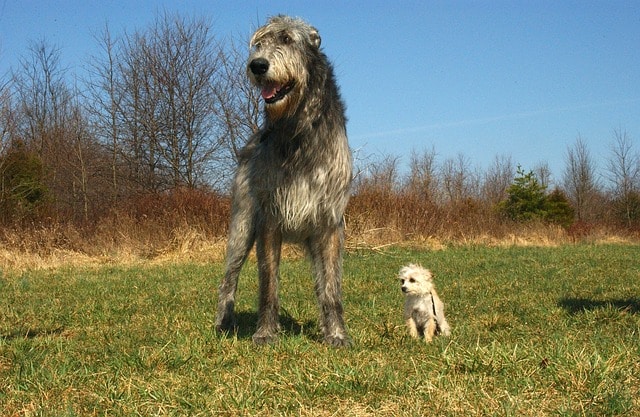By now most readers may have heard about the outbreak of canine influenza in the Midwest. There are currently over 1,000 reported cases. The unfortunate fact is the strain is H3N2, and the current influenza vaccine against H3N8 is not thought to be protective.
Canine influenza was discovered about 8 years ago in racing greyhounds in Florida and is documented in 40 states. States with the highest exposure to the virus include the Midwest, the Carolina’s, and Colorado. The risk is also increasing in Kansas.
The virus causes flu-like symptoms: coughing, fever, malaise, loss of appetite, nasal discharge, and pneumonia. The kicker is that the virus causes permanent damage to the lungs and a high rate of secondary bacterial pneumonia. Even if the dog doesn’t develop pneumonia, the virus still causes permanent damage to the lungs.
Once a dog becomes infected with influenza the virus must run its course. Keeping the dog warm, hydrated is necessary. If the dog develops pneumonia, then steam nebulization, IV or subcutaneous fluids and antibiotics are indicated. If your dog has been exposed to other dogs recently and is developing any of the clinical signs of flu: fever, cough, loss of appetite – then visit your veterinarian immediately.
The virus is very contagious and easily spread. One infected dog can bring it into an area and cause mini-outbreaks, especially in stressed populations such as shelter dogs. The virus is spread in much the same way as human influenza: an infected dog coughs or sneezes and the virus aerosolizes. Dogs that are in close confinement or close proximity are at highest risk, such as dogs in boarding or kennel facilities, day care, dogs in cities or dogs that visit dog parks.
There is a vaccine available against canine influenza: the vaccine is a 2 series – two doses 2 weeks apart are required. If your dog is at risk of exposure to influenza by contact with other dogs, or if you live in a high risk area, or if you board your dog or utilize a day care facility, then you should talk with your veterinarian about vaccinating against canine influenza. Because of the risk of infection, many boarding and day care facilities require that your dog be vaccinated against canine influenza. As already mentioned, the strain indicted in the outbreak is H3N2, and the current influenza vaccine against H3N8 is not thought to be protective.
If your dog has any of the signs of the flu, you should consider the following: Keep him or her home and avoid activities where other dogs can be exposed while the dog is coughing or exhibiting other signs of respiratory disease, usually for about 2 weeks. Keeping your dog’s toys and food and water bowls clean with soap and water can also help prevent spread of the disease. You should disinfect your hands (with soap and water or an alcohol-based hand sanitizer) and wash clothing after exposure to dogs that have signs of respiratory disease to avoid transmitting infection to other dogs. Knowledge and common sense are your best defenses against canine influenza, so be aware of any information about outbreaks of canine influenza in your area, and take appropriate precautions to keep your dog healthy.


